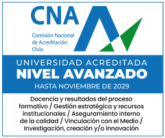Adsorption is one of the most crucial processes in water treatment today. It offers a low-cost solution that does not require specialized equipment or state-of-the-art technology while efficiently removing dissolved contaminants, including heavy metals. This process allows for the utilization of natural or artificial adsorbents or a combination of both. In this context, polymeric materials play a fundamental role, as they enable the development of adsorbent materials using biopolymers and synthetic polymers. The latter can be used multiple times and can absorb large amounts of water per gram of polymer. This paper focuses on utilizing adsorption through hydrogels composed of poly(acrylamide-co-itaconic acid) for removing Cu2+ ions dissolved in aqueous media in a semi-continuous process. The synthesized hydrogels were first immersed in 0.1 M NaOH aqueous solutions, enabling OH− ions to enter the gel matrix and incorporate into the polymer surface. Consequently, the copper ions were recovered as Cu(OH)2 on the surface of the hydrogel rather than within it, allowing the solid precipitates to be easily separated by decantation. Remarkably, the hydrogels demonstrated an impressive 98% removal efficiency of the ions from the solution in unstirred conditions at 30 °C within 48 h. A subsequent study involved a serial process, demonstrating the hydrogels’ reusability for up to eight cycles while maintaining their Cu2+ ion recovery capacity above 80%. Additionally, these hydrogels showcased their capability to remove Cu2+ ions even from media with ion concentrations below 100 ppm.



